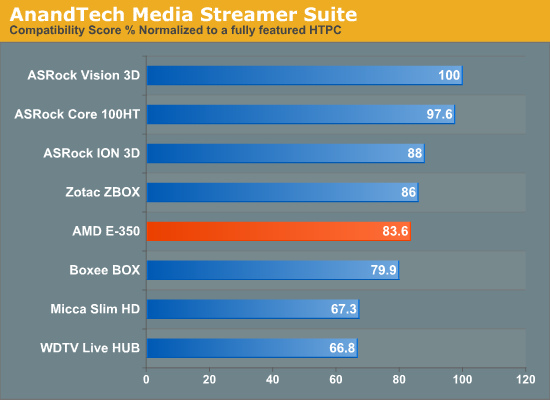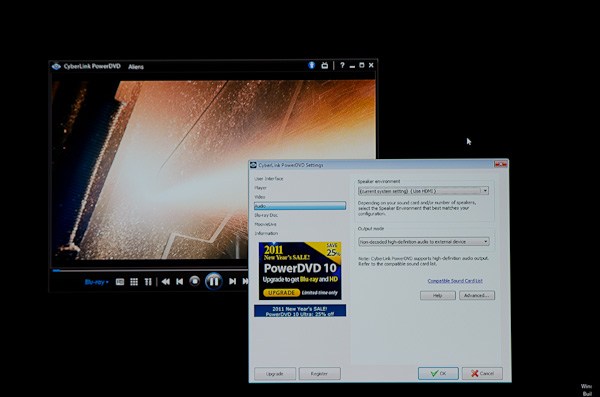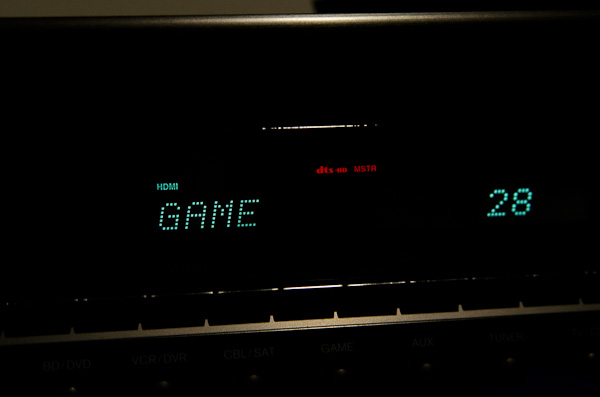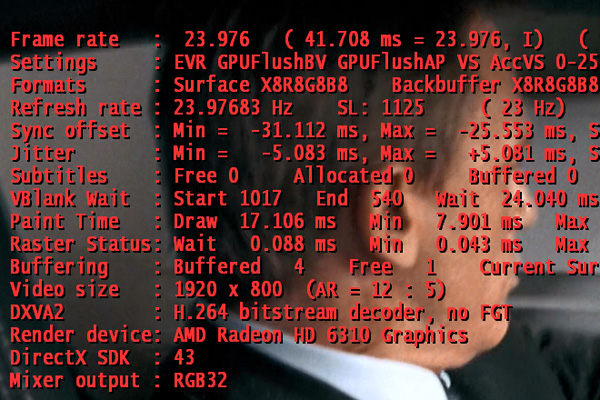The Brazos Review: AMD's E-350 Supplants ION for mini-ITX
by Anand Lal Shimpi on January 27, 2011 6:08 PM ESTVideo Decode Capabilities: Is Brazos the New ION?
While Atom may have been the right product at the right time, it was a very conservative architecture paired with a very conservative platform. For netbooks and nettops Intel chose to assume no risk at all, pairing Atom with the proven 945 chipset. As a result, it left a lot of room for innovation - something NVIDIA saw and capitalized on with ION.
While VIA created the mini-ITX form factor, it was really NVIDIA that made it interesting. The first mini-ITX ION platforms gave you almost everything you needed to build a fully capable HTPC. For video playback, with NVIDIA’s GPU (or at least its fixed function decode pipeline) doing the heavy lifting, the fact that you had an anemic Atom a couple centimeters away didn’t matter. The problem with ION is that it had no future. Without a DMI license, NVIDIA would not be able to build future versions of ION for Atom’s successors. Even after the settlement it’s unlikely we will ever see modern versions of ION, especially considering that Intel’s 2011 Atom platform (Cedar Trail) will finally integrate H.264 decode acceleration in Q4.
Where Intel is conservative, AMD will innovate. Brazos adds a number of advantages from a media standpoint over Atom. There’s native HDMI support and a full implementation of AMD’s UVD3 decode engine supporting hardware H.264, VC-1 and MPEG-2 acceleration. Although both of these advantages are also enjoyed by ION the next feature isn’t. Brazos supports Dolby TrueHD and DTS-HD MA bitstreaming over HDMI. From a feature standpoint, Brazos is even more complete than ION.
I ran MSI’s Brazos board through our Media Streaming compatibility suite. Below is Brazos’ compatibility score compared to the other devices and HTPCs we’ve put through the suite:

Failed Tests
- 1080p60 60 fps L5.1 H.264
- L5.1 H.264 (16 reference frames)
- FLAC, ASS Subs - High CPU Utilization
- HD Real Media
- Deinterlacing
Numerically, Brazos actually falls behind ION. Allow me to explain why. Our Media Streaming suite tests virtually everything you might throw at a HTPC. When it comes to the most commonly found content, Brazos excels. It can handle Blu-ray discs (although there’s no Blu-ray 3D support), it can deal with 1080p x264s commonly found online and it even accelerates Flash video (more on this later). Brazos’ UVD3 however is tied to clock speed, and the GPU clock of the Radeon HD 6310 is pretty low at 500MHz. As a result, Brazos fails certain tests. The platform is incapable of accelerating and playing back 1080p60 H.264 video. Very little content falls into this category, however if you want to play it you can’t on Brazos. The good news is 1080i60 works just fine.
Brazos’ GPU also fails all of our deinterlacing tests, something we noticed in reviews of AMD’s entry level GPUs. The higher end models don’t have an issue here but the lesser equipped models do. Again, chances are that you won’t want to watch interlaced content on your Brazos HTPC so this is likely not a big issue.
The other shortcomings are videos with components that aren’t accelerated by UVD3. For example, HD Real Video chugs on Brazos as does our heavy FLAC + ASS subs test. If you’re playing non-3D Blu-ray content or 1080p24 x264s you find on the web, Brazos will easily fit the bill. It’s the more eccentric content that you’ll run into CPU limitations with.
Since the Radeon HD 6310 is derived from AMD’s desktop GPUs we get full 23.976 fps support when you select 23Hz in AMD’s Catalyst driver:
Selecting 24Hz yields a 24.000Hz refresh rate.
As I mentioned earlier bitstreaming both TrueHD and DTS-HD MA are supported over HDMI:














176 Comments
View All Comments
Stuka87 - Thursday, January 27, 2011 - link
I am happy that the Brazos has turned out to be as good as I hoped it was going to be.And its awesome to see AMD hand it to Intel in something :)
sprockkets - Thursday, January 27, 2011 - link
obvious troll, is a dumbasszodiacfml - Thursday, January 27, 2011 - link
Way back, AMD not making an Atom is a painful decision, I think they had Brazos on plans.Anyways, what a very nice piece of kit. I have a dual core atom desktop that has unusable 1080 video playback.
This is the HTPC to get, simple, small, low power, and cheap.
Regarding power supply, I have a question of design.
If notebooks and netbooks can get by a DC power adapter, can mini-itx boards use one especially now that many replacement power adapters are available. This is a problem with my atom system since it uses a standard 300w power supply which is inefficient and huge (standard case).
cyrusfox - Friday, January 28, 2011 - link
About PSU, yes many low power designs are out there. Just check out PicoPSUhttp://www.mini-box.com/s.nl/sc.8/category.13/.f
Some premium boards come with the power supply onboard. I hope to see a brazos board come along with the same feature. I would imagine that the cheap 20 pin pico PSU will work fine on these new brazos boards as the draw is so low (will that work Anand, a 20 pin connecter in place of the 24pin connector on this board?) Great thing about these PSU is they are silent(no fans) and very efficient( I have heard 96%). But that isn't counting the conversion lost from AC to DC. You need an AC adapter to go with these supplies, but the AC adapter does not need to output the same amount of watts as the picoPSU. Definitely a solution you should look into.
zodiacfml - Sunday, January 30, 2011 - link
cyrusfox, thanks for the link!msroadkill612 - Friday, February 4, 2011 - link
yeah - me too - have been looking for this for agesam also curious about 20 pin thing - my guess is u may have to pass on a pciE card. - any one know?
Metaluna - Monday, January 31, 2011 - link
There's also the Antec ISK 100 case that has a Pico-like PSU built in:http://www.newegg.com/Product/Product.aspx?Item=N8...
strikeback03 - Friday, January 28, 2011 - link
In my carputer the one problem I found was that while a PicoPSU might overall put out enough power to run a board, individual rails might have issues. I was using an Atom330 board and the PSU slowly died, had plenty of 12V power available but findings on the forums indicated that the board overdrew the 5V rail.msroadkill612 - Friday, February 4, 2011 - link
thanks for the heads upnlr_2000 - Thursday, January 27, 2011 - link
Brazos does "very again well" against Atom on absolute performance, die size and price.Thank you for the review